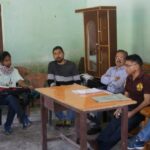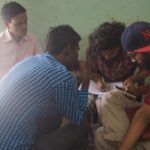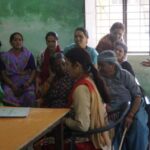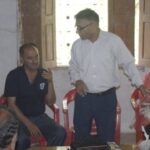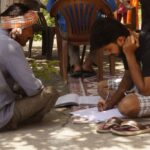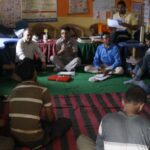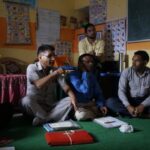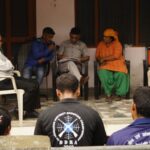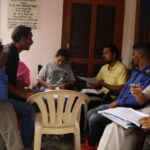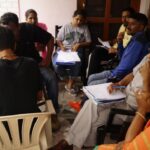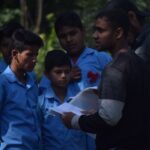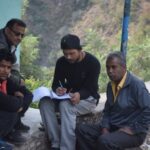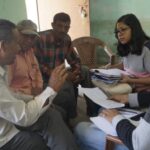PREPARATION OF PBR AND BCP OF GRAM PANCHAYATS
PREPARATION OF PEOPLE’S BIODIVERSITY REGISTER (PBR) AND BIO- CULTURAL COMMUNITY PROTOCOL (BCP) OF GRAM PANCHAYATS FOR UTTARAKHAND BIODIVERSITY BOARD
INTRODUCTION AND BACKGROUND OF THE PROJECT
The project operates within the context of the Convention on Biological Diversity (CBD), established in 1992 during the ‘Earth Summit’ in Rio de Janeiro, Brazil. This international framework aims to address concerns about the depletion of biological resources. India, known for its remarkable biodiversity, ratified the CBD on February 18, 1994. The CBD focuses on conserving biodiversity, promoting sustainable use, and ensuring equitable benefit sharing from biological resources. To adhere to CBD provisions, India enacted the Biological Diversity Act in 2002 and the Biological Diversity Rules in 2004. Implementation occurs through a decentralized mechanism involving the National Biodiversity Authority (NBA) at the national level, State Biodiversity Boards (SBBs) at the state level, and Biodiversity Management Committees (BMCs) at the local body level. One essential requirement of the Biological Diversity Act is the preparation of People’s Biodiversity Registers (PBRs), a task assigned to BMCs. These registers serve as comprehensive documentation of the biological diversity within specific areas. This includes the preservation of habitats, conservation of land races, folk varieties, cultivars, domesticated stocks, animal breeds, micro-organisms, and the recording of traditional knowledge associated with biological diversity. The BMCs ensure that local communities actively participate in the PBR preparation through meaningful consultations. The PBRs contain comprehensive information on local biological resources, including their uses and traditional knowledge. Additionally, a Bio-Cultural Community Protocol (BCP) is developed to promote Access and Benefit Sharing (ABS).
The BMCs bear the responsibility of safeguarding the knowledge documented in the PBRs, regulating external access to this information. The National Biodiversity Authority’s guidelines and prescribed data recording formats guide the PBR creation process. The preparation of PBRs is a participatory process, necessitating detailed consultations with stakeholders, particularly local communities, to capture both common and specialized knowledge. The process involves forming BMCs at the Gram Panchayat level, raising awareness about the project’s objectives, training members in data collection, analysis, and validation, and eventually creating the PBRs while adhering to standardized formats. These registers are meticulously maintained, validated, and counter-signed by the Board through its authorized officer. It is imperative that local people play an active role to ensure the preservation of traditional knowledge and practices. Recognizing the role of indigenous and local communities (ILCs) as biodiversity guardians, bio-cultural rights have emerged as a significant aspect of conservation efforts. While international environmental laws emphasize environmental protection and access to traditional knowledge, they may not adequately empower ILCs to sustainably manage their resources and apply their traditional knowledge according to their bio-cultural values. To address this, bio- cultural community protocols (BCPs) have been introduced as tools to empower ILCs. These protocols are developed through consultative processes and outline core ecological, cultural, and spiritual values, as well as customary laws related to traditional knowledge and resources. BCPs define the identity of ILCs, establish leadership structures, decision-making processes, and underscore the principles and power structures governing self-governance. Key components of BCPs include self- definition, customs-resource links, in-situ conservation, and community rights. These protocols aim to bridge the gap between environmental laws and ILC empowerment, fostering sustainable practices and respecting traditional values.
AIMS AND OBJECTIVES OF THE PROJECT
- Enable the biodiversity management committee (BMC) to comprehensively document the biological diversity of a designated area, encompassing habitats, land races, folk varieties, cultivars, domesticated stocks, animals, micro- organisms, and associated traditional
- Empower local community members to actively engage in the preparation of the People’s Biodiversity Register (PBR) through meaningful consultation and collaborative
- Gather in-depth and comprehensive information pertaining to local biological resources, encompassing their various uses and traditional
- Safeguard the recorded traditional knowledge by implementing regulations to control external access to
- Ensure the alignment of the PBR preparation process with the guidelines established by the National Biodiversity Authority.
- Recognize and uphold the bio-cultural rights of indigenous and local communities (ILCs) in their role as stewards of biodiversity
- Empower ILCs to effectively manage and sustainably utilize their natural resources by applying their customary laws.
- Facilitate the development of Biocultural Community Protocols (BCPs) through a participatory and consultative process, delineating ecological, cultural, and spiritual values, along with principles of governance.
- Articulate the collective identity, leadership structures, decision-making processes, spiritual connections to nature, and the shared traditional knowledge and resources of ILCs.
- Encourage the promotion of in-situ conservation practices for indigenous plants, livestock, wildlife, and more.
- Establish a requirement for consent from the BMC before external entities can access the land and traditional knowledge of the ILCs.
- Address local challenges, assert rightful ownership over bio-resources, and advocate for respect towards customary laws within the BCP
- Enhance the capacity of ILCs to effectively implement environmental laws and guidelines within their local contexts, fostering sustainable resource management and conservation efforts.
COMPONENTS AND ACTIVITIES OF THE PROJECT
- Provide the necessary tools to empower the Biodiversity Management Committee (BMC) for compliance with the Biological Diversity
- Thoroughly document a wide range of biological elements, including habitats, land races, folk varieties, cultivars, domesticated stocks, animal breeds, micro- organisms, and linked traditional
- Actively engage local communities through meaningful consultation and extensive data collection
- Systematically record the various uses, traditional knowledge, and medicinal attributes associated with local biological
- Implement regulatory measures to control external access, ensuring the integrity of recorded knowledge.
- Align the creation of the People’s Biodiversity Register (PBR) with guidelines prescribed by the National Biodiversity Authority and relevant data recording
- Recognize indigenous and local communities (ILCs) as esteemed guardians of biodiversity, endowed with collective bio-cultural
- Develop Bio-Cultural Community Protocols (BCPs) through consultative procedures, outlining core ecological, cultural, and spiritual values alongside customary
- Define the unique identity of ILCs, establish leadership structures, and elucidate decision-making
- Establish a comprehensive link between cultural practices, daily resource utilization, and spiritual insights into the natural
- Promote the conservation of indigenous plant species, livestock, wildlife, and ecosystems within their natural settings.
- Highlight the vital role of ILCs in safeguarding biodiversity and assert their legitimate claims over bio-resources in line with national and international legal
TARGET AREA OF THE PROJECT
The project is focused on a precise target area encompassing 7 gram panchayats within the Mussoorie Forest Division and Tehri Forest Division. These identified gram panchayats serve as the project’s target, aiming to facilitate sustainable development and conservation of natural resources in the region.
TARGET GROUPS AND BENEFICIARIES OF THE PROJECT
The project has engaged the entire community residing in the selected villages for interaction and discussion to collect their feedback and traditional knowledge, which was utilized in the development of the People’s Biodiversity Register (PBR) and Biocultural Community Protocol (BCP).
FUNDING PARTNER OF THE PROJECT
The funding for the project was provided by the Uttarakhand Biodiversity Board, Department of Forests, Government of Uttarakhand, Dehradun.
SANCTIONED BUDGET OF THE PROJECT
The Uttarakhand Biodiversity Board sanctioned the budget for the project in 2016, via a sanction order numbered 639/5-3(5)/II dated 07.12.2016. The total budget for the project, which was sanctioned by the Board for a period of one year, was Rs. 8,40,000.00.
OUTCOMES AND ACHIEVEMENTS OF THE PROJECT
The outcomes and achievements of the Preparation of People’s Biodiversity Register (PBR) and Bio-cultural Community Protocol (BCP) project can be summarized as follows:
- The PBR has been meticulously prepared through consultations with local communities in adherence to the Biological Diversity Act of
- Comprehensive information regarding local biological resources, their traditional uses, and associated traditional knowledge has been incorporated into the
- Ensuring the safeguarding of recorded knowledge in the PBR and regulating its external access has been effectively managed by the
- Data recorded under the 31 formats outlined in the National Biodiversity Authority’s guidelines for PBR preparation has been systematically
- The collaborative preparation of PBRs has actively involved comprehensive consultations with all stakeholders, particularly local
- Indigenous and Local Communities (ILCs) can significantly enhance their capacity to implement international and national environmental laws at the local level through the development of BCPs.
- BCPs, following a consultative process, have been meticulously formulated as community protocols to delineate ecological, cultural, and spiritual values, along with customary laws relating to traditional knowledge and
- BCPs have been designed to clearly define the community’s identity, values, cultural connections to land and resources, and the principles governing its self-
- The process of crafting a BCP has involved introspection into the interconnectedness of diverse aspects of ILCs’ ways of life, encompassing culture, customary laws, practices for natural resource management, and traditional
- The BCP has comprehensively covered the group’s identity, leadership, decision-making, the role of customs in resource use, spiritual perspective on nature, and mechanisms for knowledge.
- The plan emphasizes the group’s conservation efforts for indigenous biodiversity, BMC consent for resource access, and addresses local challenges while asserting community rights under national and international
- The BCP strongly calls on stakeholders to respect the group’s customs and values, outlining needed assistance for uninterrupted sustainable


